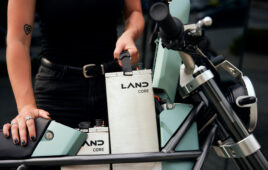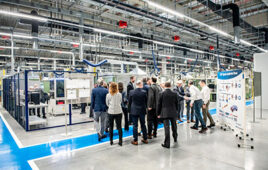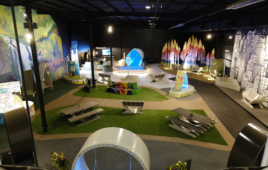Over the past several years, flywheel clean energy storage systems have become a larger player in energy storage. Flywheels are deployed worldwide and provide power backup and power regeneration to mission-critical applications. Improved reliability, reduced maintenance and increased power density are a few of the recent improvements to the current generation of systems.
VYCON, a Los Angeles designer and manufacturer of flywheel systems, recently shipped its 300th flywheel system. According to Dann McKeraghan, a VP of Power Quality for the company, magnetic levitation has replaced service-needy mechanical bearings, helping eliminate down time and cost.
“Power density has been increased to provide 300kW in a 1600-lb total package, versus the 5000 lb in earlier mechanical bearing designs of flywheels,” said McKeraghan. “The need for liquid cooling was also replaced with more conservative fan and convection methods, further adding to the dependability of the design. Flywheels applied to uninterruptable power systems (UPS) for dc energy storage are used in many critical applications such as healthcare/hospitals, data centers, casinos, broadcast, and education.”
Batteries have traditionally been used for UPS applications as a source of stored dc energy. But according to Louis Romo, VP of Energy Recycling for VYCON, batteries have always been the weakest link, responsible for more than 35% of system failures. They may require replacement every four years, compared to a design life of 20 years for flywheels.
VYCON’s expertise is based on proprietary technology for high speed rotating equipment.Motors and generators for various applications had been previously designed from a 1 kW motor with a rotating speed of 450,000 rpm to a 2 MW generator rotating at 24,000 rpm. The key engineering task with the new systems, according to Romo, was to design a rotor assembly with an attached steel mass that rotordynamically performs like a single mass object.
“When spinning a standard rotor to high speeds, there are rotordynamic design concerns that are taken into account—but when adding a large steel mass at one end, the design thus becomes much more complex,” he said. “VYCON designed the rotor and bearing system to operate through and near critical frequencies as it rotates up to 36,000 rpm. We configured the rotor design to provide adequate stiffness through the full length of the assembly—making it look rotordynamically like a one-piece material. The enabling technology is the unique assembly process and the operation of our active magnetic bearing system. The magnetic bearing is able to control rotor position while dampening the various operating modes in a variety of environments.”

In an interesting twist of green engineering, VYCON’s operations have several energy saving aspects. A key energy savings practice to reduce power usage during testing is to pair units together to recycle power. The company’s crane applications are designed to recover power when a port container is lowered, and then use that power during a lift to reduce fuel and emissions from the diesel engine.
“As part of our qualification testing prior to shipping a unit, we need to validate performance, which is done by cycling power to and from the unit for an extended period of time,” said Romo. “To reduce energy consumed, we created software to run on each unit that allows them to throw power back and forth between each other, thereby minimizing our power usage while accomplishing our needed cycle testing.”
VYCON
www.vyconenergy.com
::Design World::
Filed Under: Green engineering • renewable energy • sustainability, Energy management + harvesting





Tell Us What You Think!